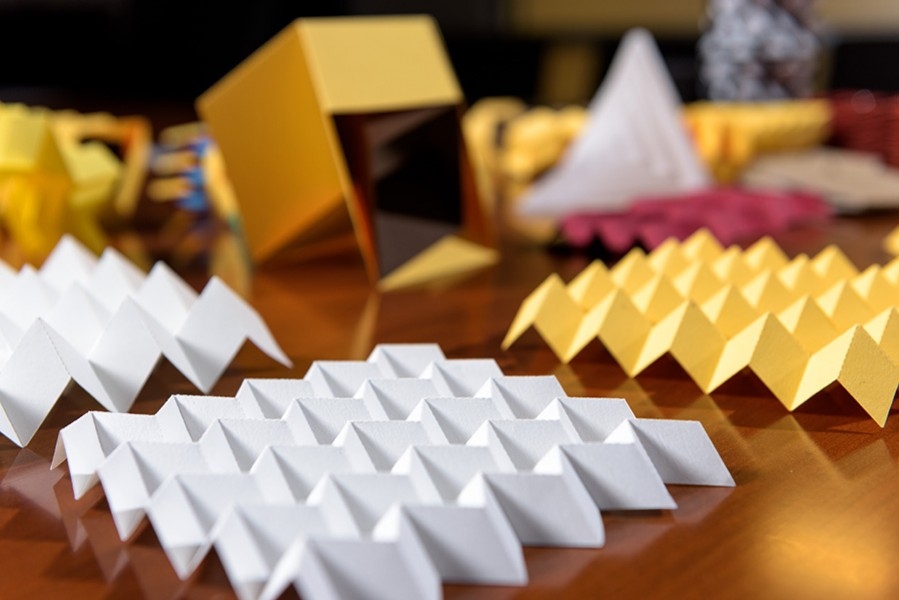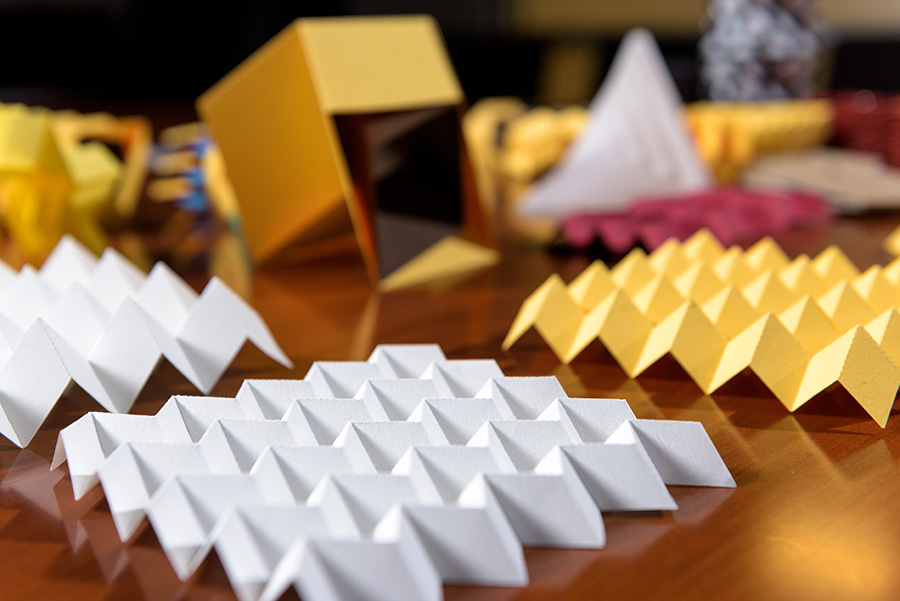 Paper origami models demonstrate various folding patterns that can be useful in engineering applications. In the foreground is a sheet in the Miura-ori pattern. (Photo: Rob Felt) |
After nearly a decade of quietly turning the idea over in his mind, Glaucio Paulino took the leap last fall.
Origami engineering had engaged his mind and driven some of his research over that time, so he decided to finally teach an undergraduate class on the subject — the first of its kind anywhere in the country. But rather than limit enrollment to civil and environmental engineering students, he threw open the doors to any student at Georgia Tech.
It was a risk.
“This class was different from every other class I have taken or taught in my life,” he said with a chuckle, because usually “the students are quite homogeneous, quite similar, and that makes it easier to teach.
“This class was highly heterogeneous, and I had to learn how to teach. That was the challenge. Even during the semester, I didn’t know if it would be a failure or a success.”
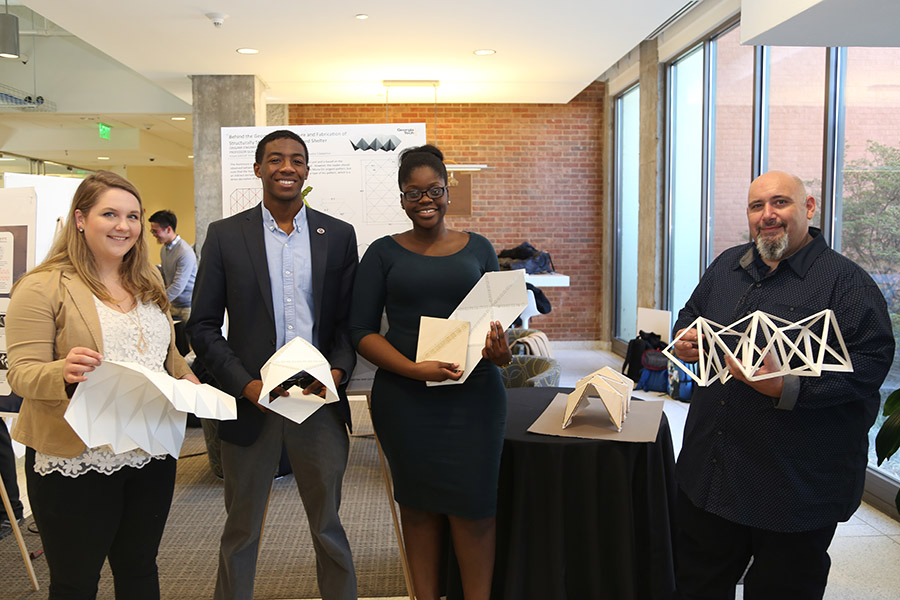 The Origami Engineering class culminated in a "trade show" where student teams presented origami designs for social good. Groups had to include students from at least two different majors, a hallmark of a class that featured students from nearly every engineering discipline at Georgia Tech as well as students from the College of Design and the College of Sciences. The Yoshi Group used a single Miura-ori based Yoshimura origami pattern to design four unique structures. From left, civil engineering major Phoebe Edalatpour, industrial and systems engineering majors Jared Williams and Maria Yagnye, and architecture graduate student Emanuel Ferro hold models of their designs. (Photo: Jess Hunt-Ralston) |
The hope was that students from all kinds of backgrounds could see how the principles of origami might apply in science, engineering and technology. Ultimately, Paulino ended up with a group of roughly 50 students from every engineering discipline plus architecture, physics, math and more. “Heterogeneous” might be a bit of an understatement.
“My approach was to teach the same subject in different ways,” said Paulino, the Raymond Allen Jones Chair in the School of Civil and Environmental Engineering. For any one lesson, that might have included the working through the underlying geometry at the white board; using illustrations; or creating Lego-type models, prototypes and hands-on experiments. “Hopefully someone would find a way there that would make sense for them. All you needed to do was find one way, and then you could understand, but you had four or five opportunities.”
“I loved how this class was filled with so many different majors,” said Nabilah Khanam, a biomedical engineering student who used the course toward her minor in global engineering leadership. “It helped bring in new perspectives to class discussions. It exposed me to what different skills and knowledge others majors on campus have, but also helped me see that, in some ways, we are all similar.”
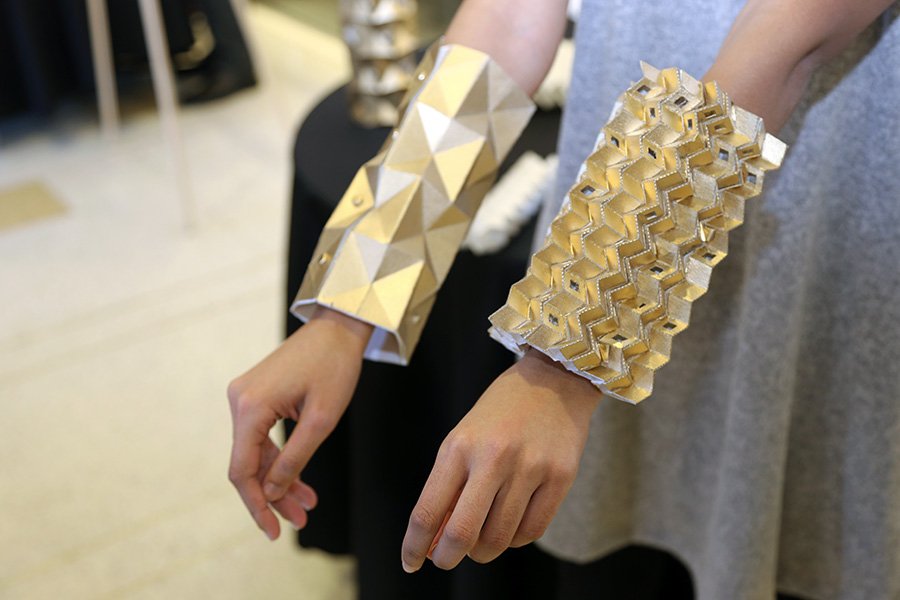 |
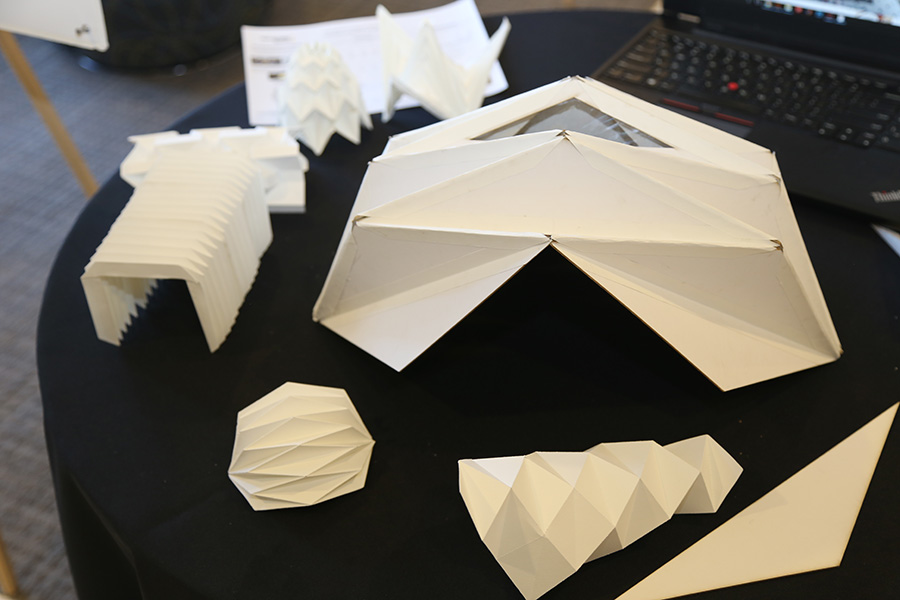 |
 Students in Glaucio Paulino's Origami Engineering class used origami to design for social good. Among the projects they displayed in an end-of-semester "trade show" were an origami cast, top, that would be more hygenic for patients; an origami-based temporary shelter for homeless people, middle; and self-cleaning solar panels for desert — or extraterrestrial — environments. SEE MORE PROJECTS. (Photos: Jess Hunt-Ralston) |
The class finished with projects where groups had to include students from at least two different majors, one of the ways Paulino said he could capitalize on students’ varying experiences. They created designs using origami for social good and displayed their work in a trade show in the high-traffic Mason Building lobby. Some students even traveled to Japan with Paulino after the class ended to work with students at the University of Tokyo and meet some of the pioneers of origami.
Industrial and systems engineering student Margo Bridgers said she had been interested in origami since she was a child, so “when I saw there was a class that explained and expanded on the subject of origami [and] incorporated origami in engineering, I had to be a part of it.” But she found some of the math challenging and was frustrated that she didn’t understand some of it as well as her peers.
“It was such an amazing experience to have group members from other majors who were willing to help me as well as inspire me and give me the encouragement I needed when I was feeling discouraged,” Bridgers said. “I grew so much from this class.”
Paulino is already planning version 2.0 of Origami Engineering for fall 2018, but he said he expects a very different experience.
“What makes it exciting is there will be some new things that happen that we don’t know, but it will make it exciting. It is a different group, different dynamics, maybe different majors, different challenges.”
He also said he’s glad he finally found the space to teach the course in the first place.
“I really appreciate the wonderful environment we have here at Georgia Tech and how open people are to new ideas. This is what makes this a fantastic place,” Paulino said. “I have been thinking about it for many years, but only after I came here could I make it happen.”

